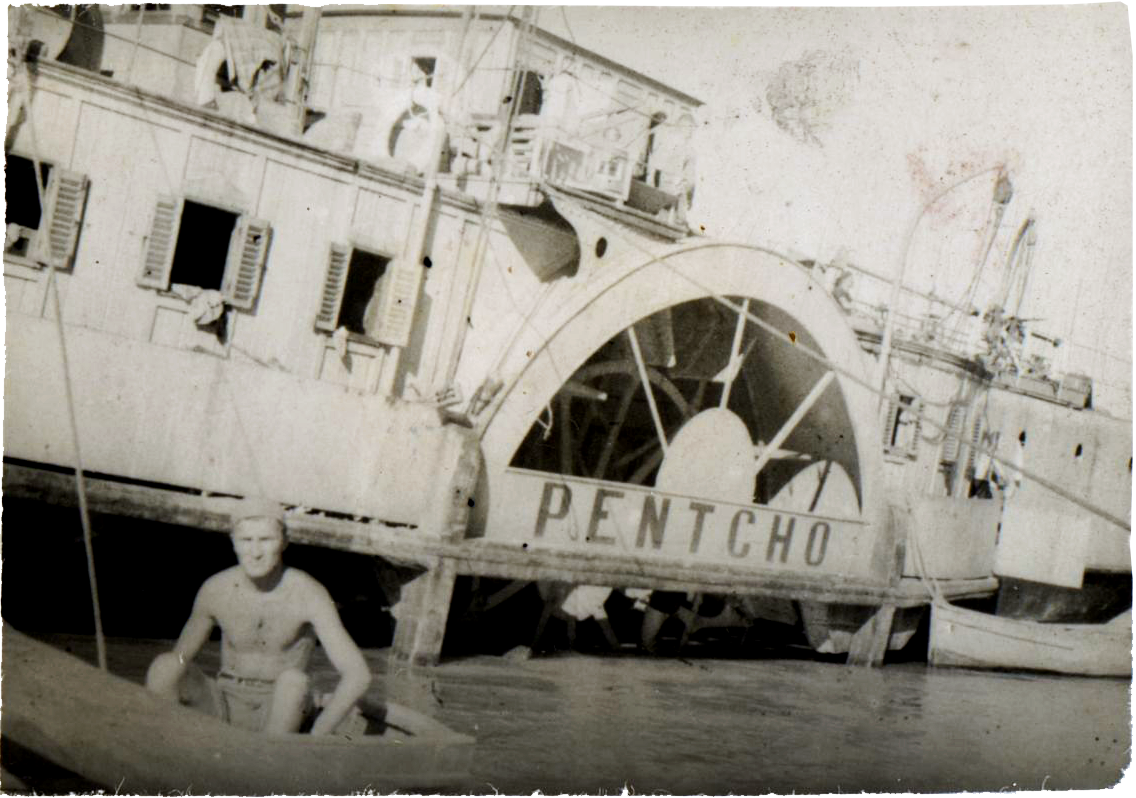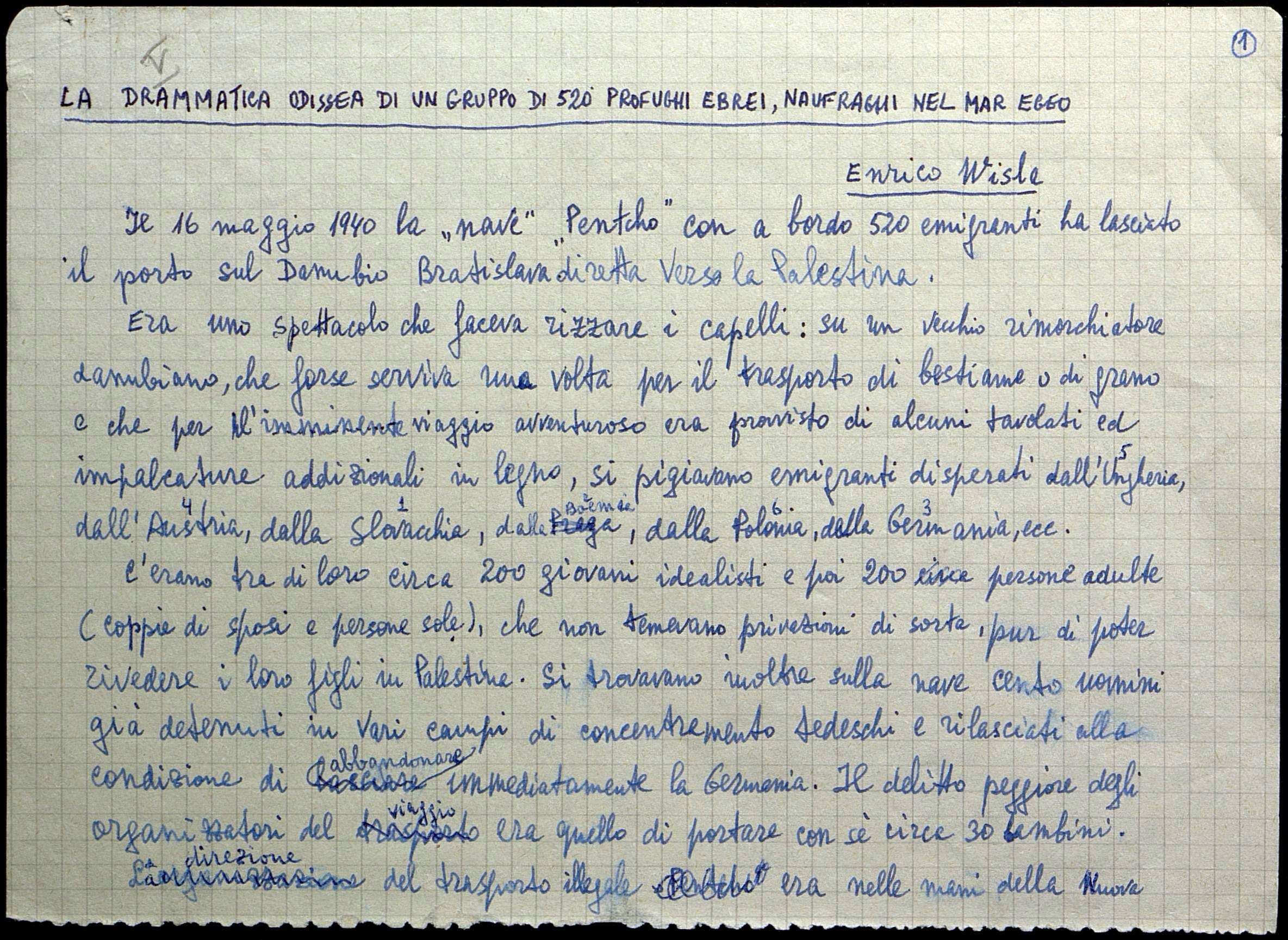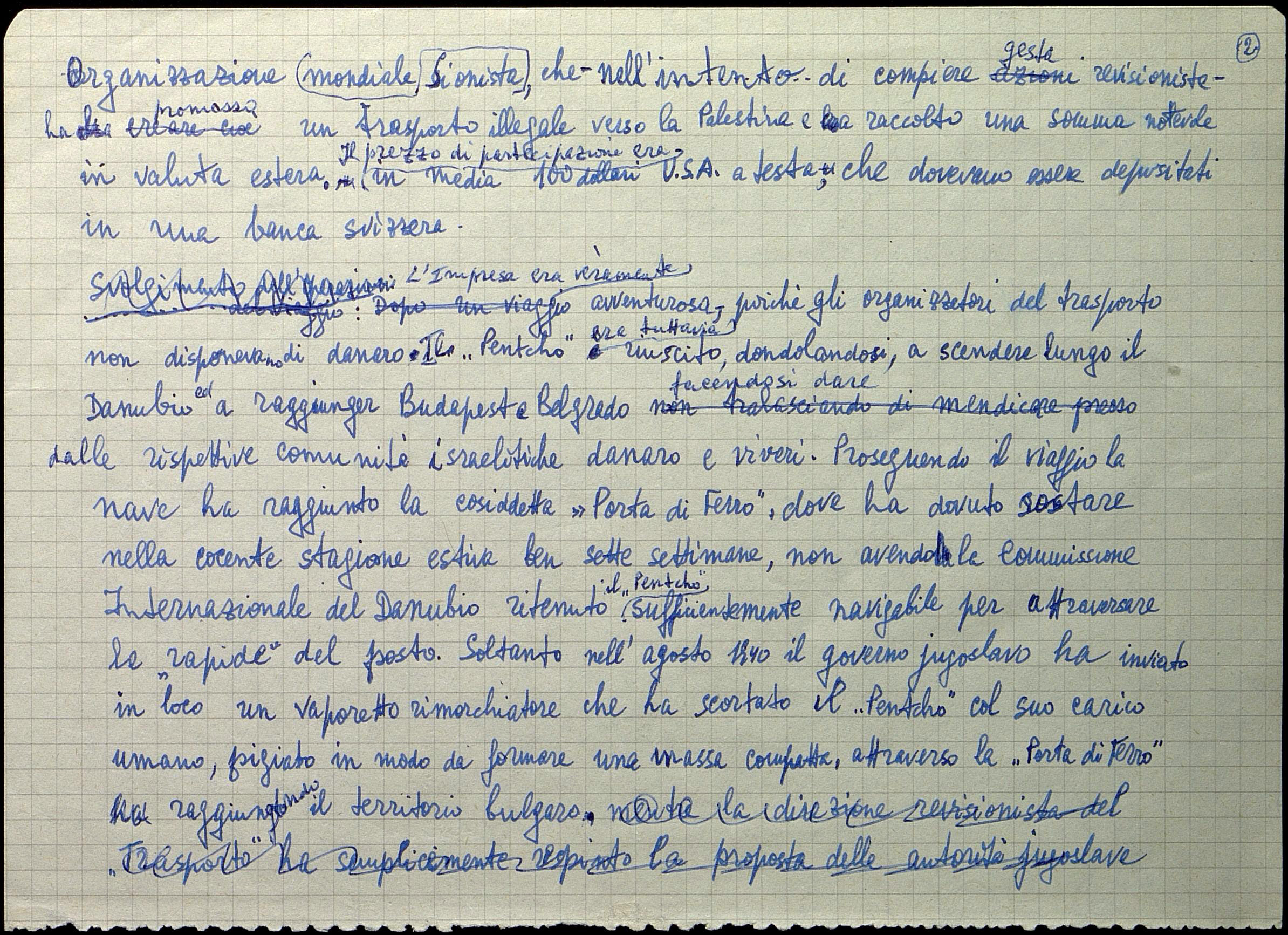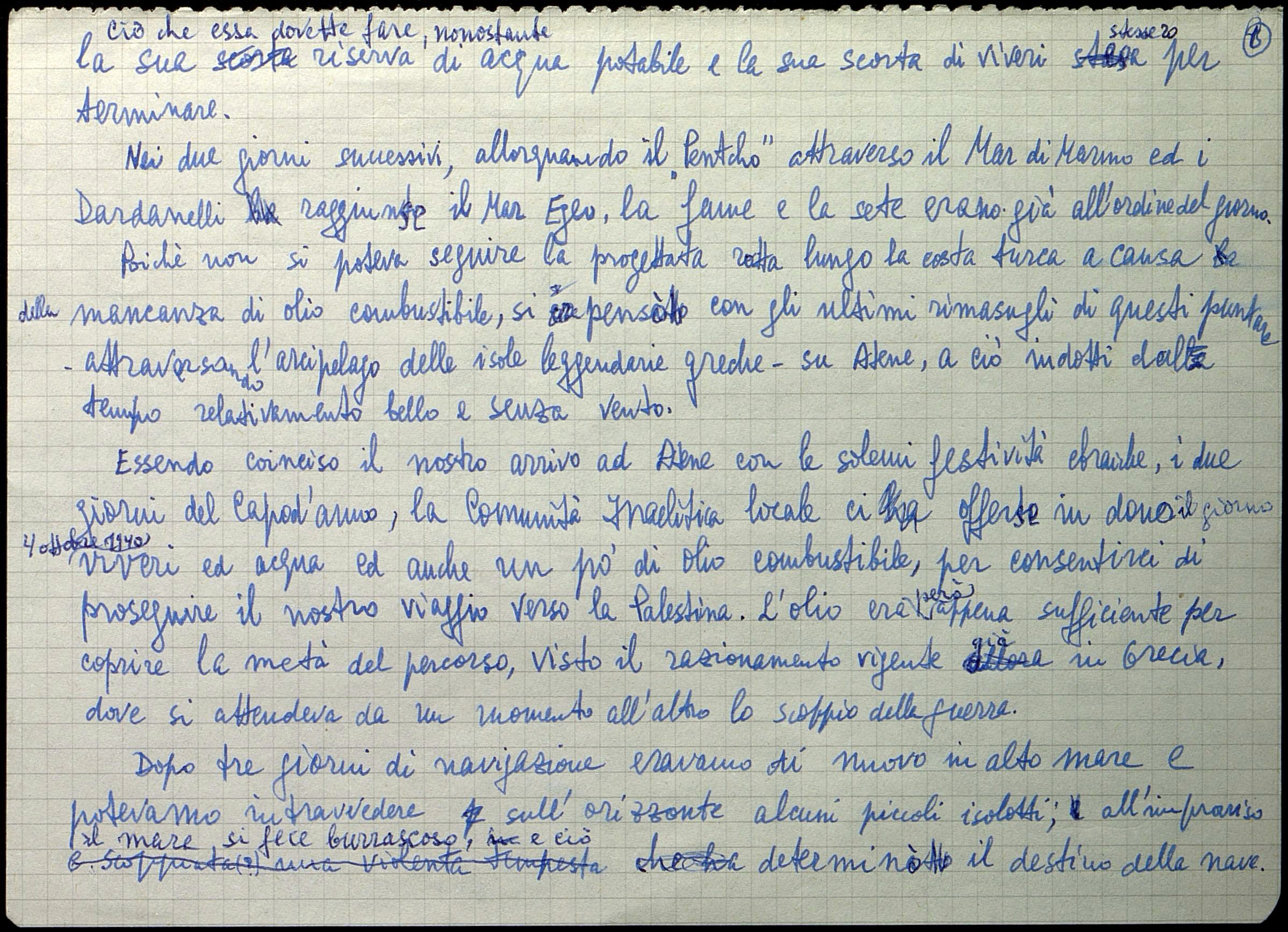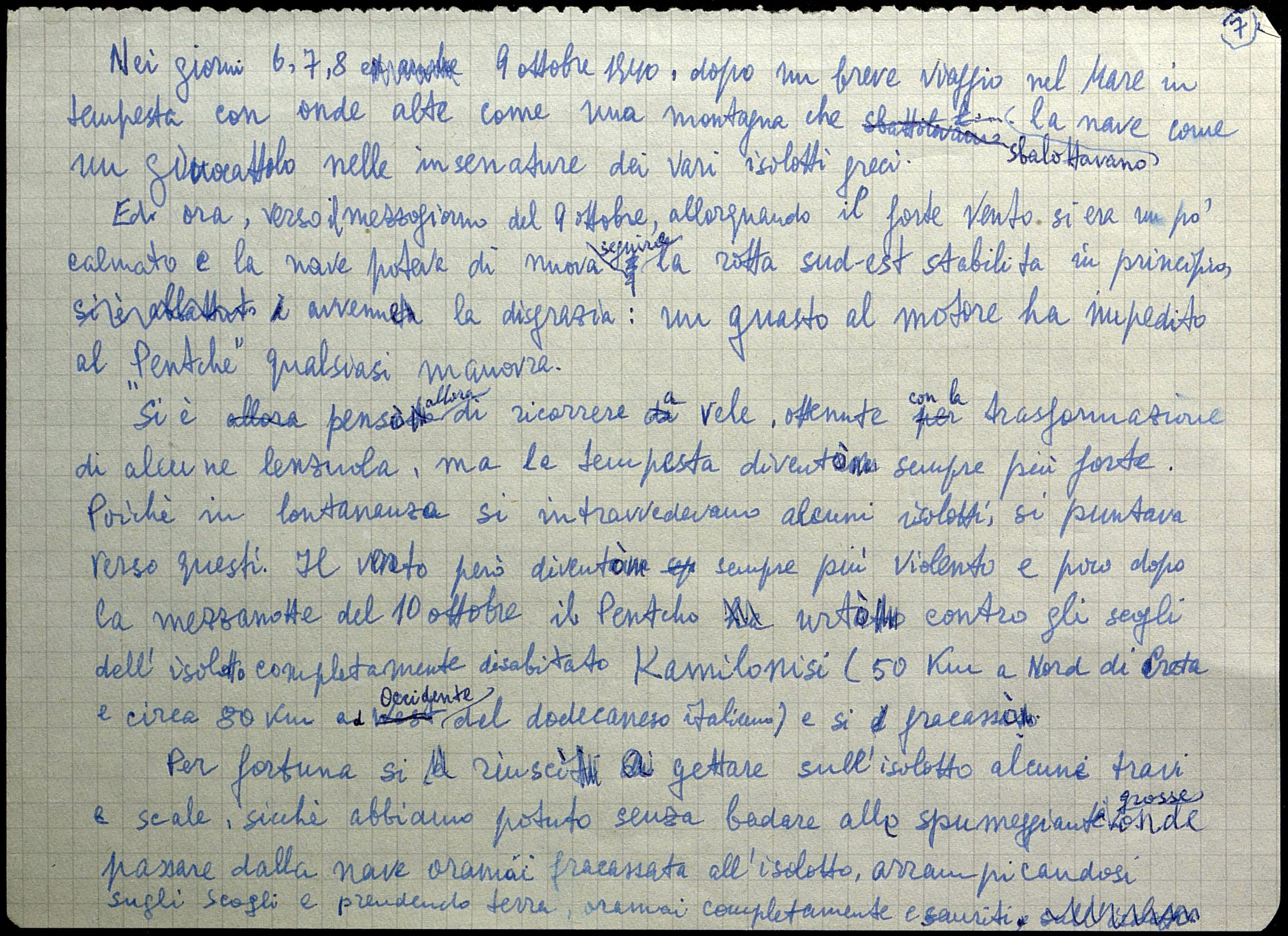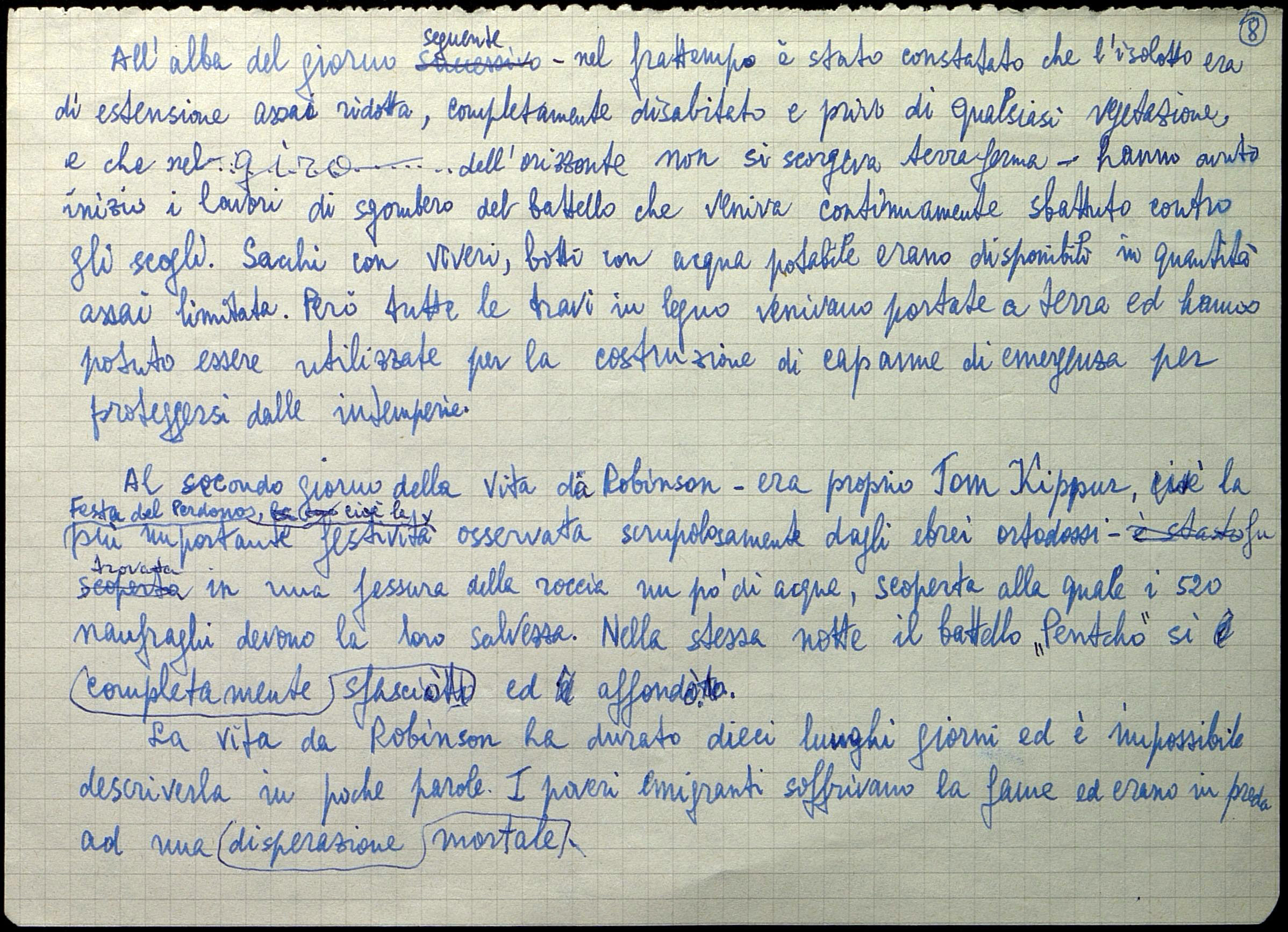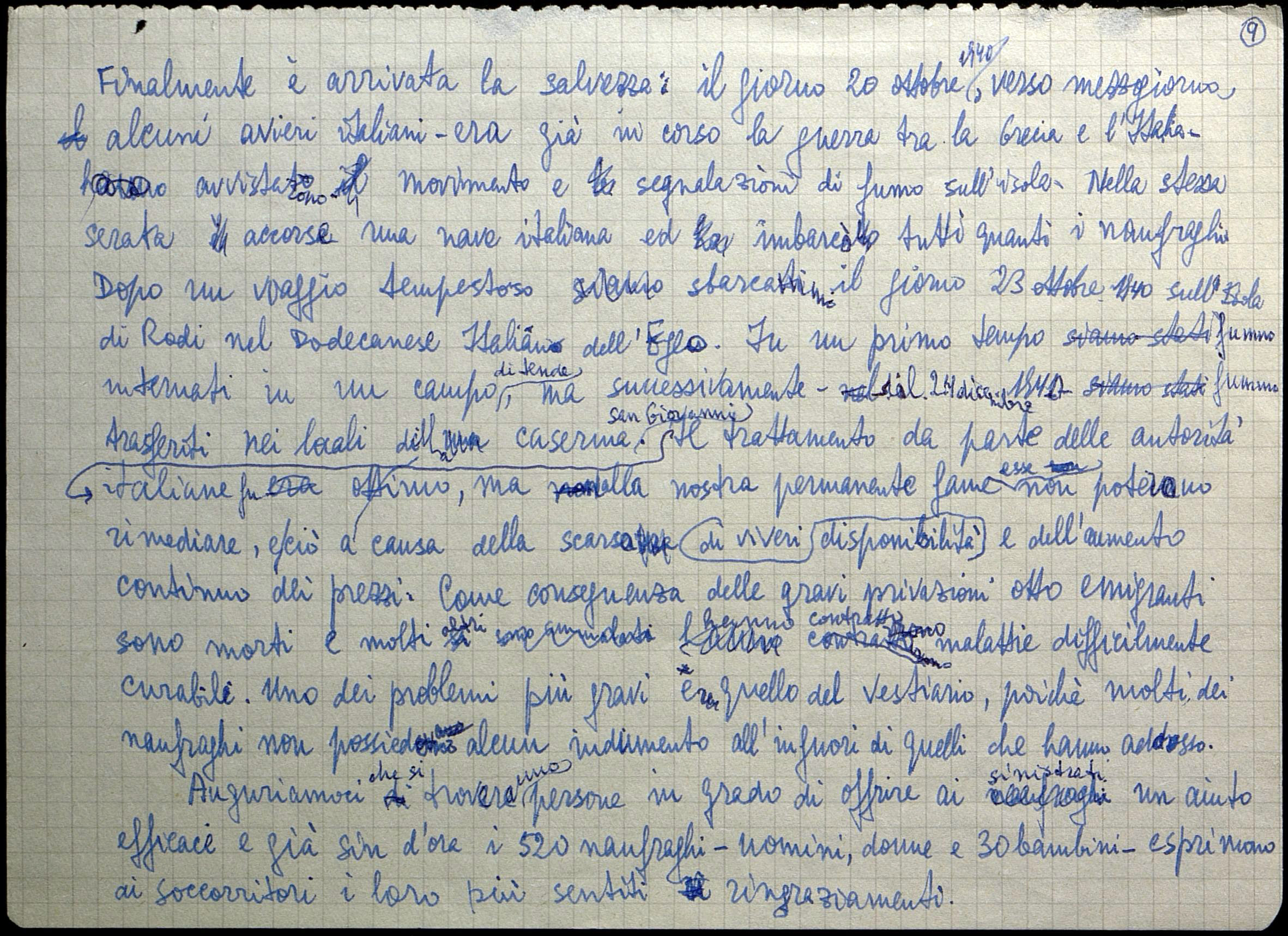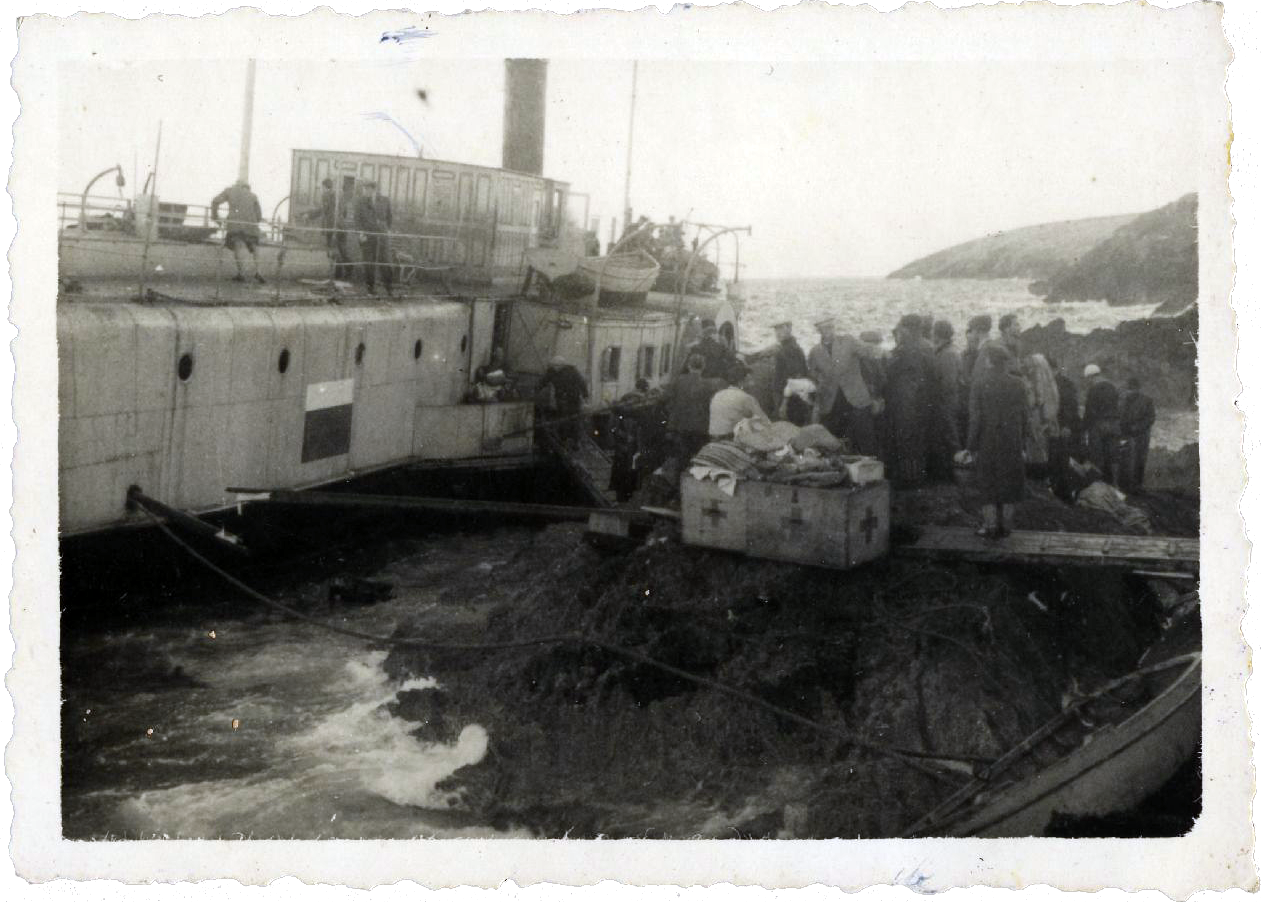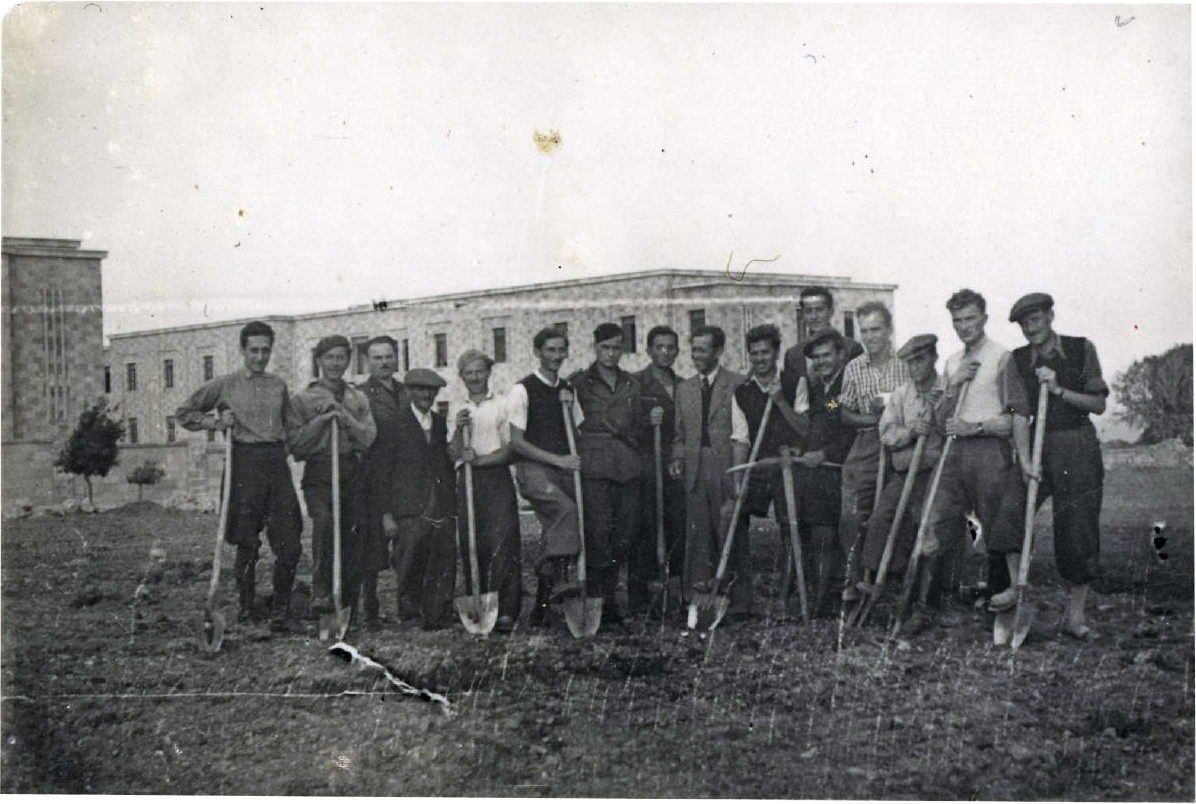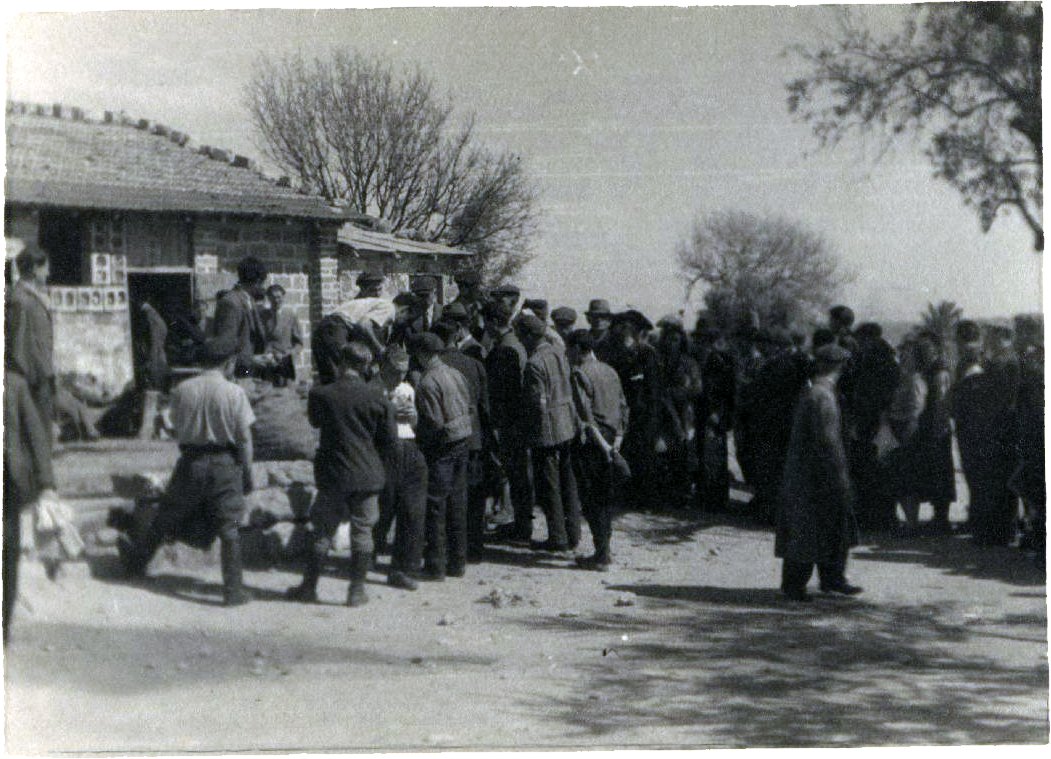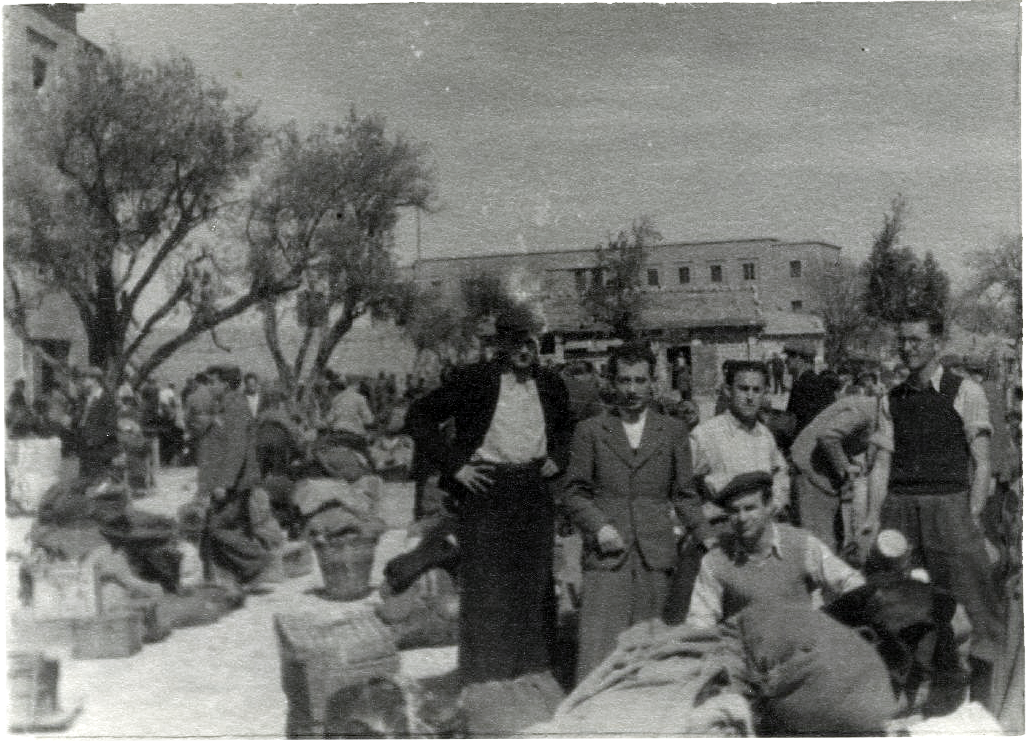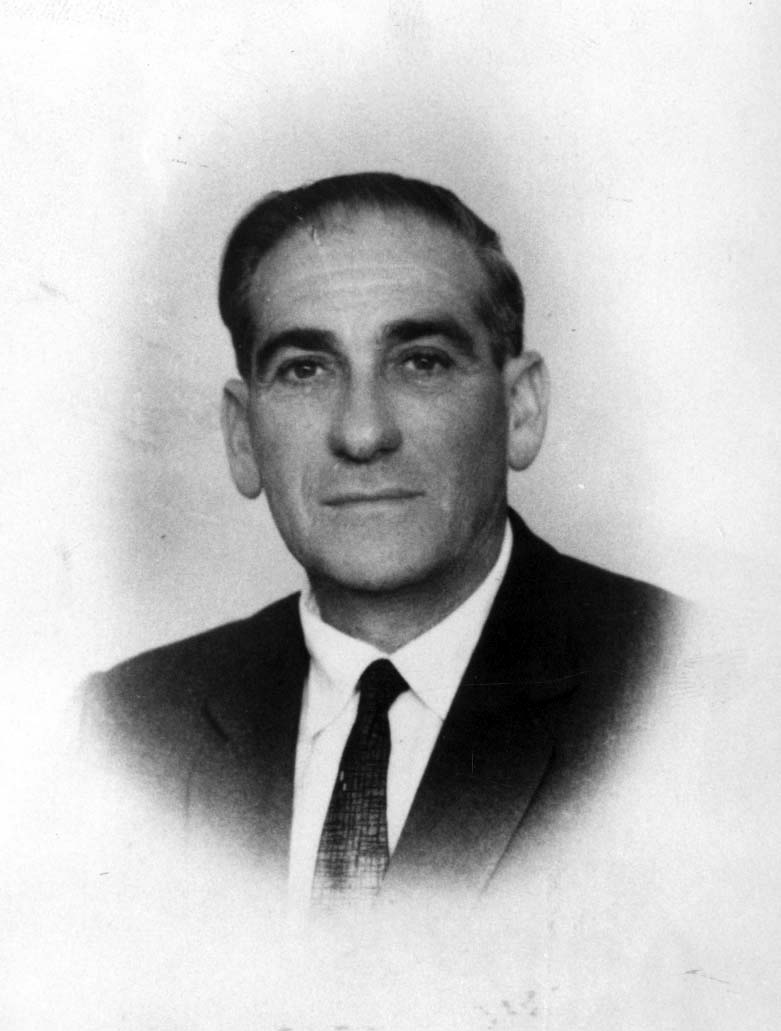Home » In-depth. Exceptions to the deportation of 23 July 1944 » The Pentcho castaways
The Pentcho castaways
One of the sea routes which led from Europe to Palestine passed through the Aegean Sea and the Dodecanese islands.
In the 1930s, the Italian Royal Navy stationed in Rhodes played a pivotal role in controlling territorial waters and intercepting and rescuing clandestine boats carrying mostly Ashkenazi Jews from Central and Eastern Europe who were fleeing anti-Semitic persecution and seeking to reach safe havens by sea.
The “Pentcho” was an emblematic case.
On 16 May 1940, 520 Austrian, German, Polish, Hungarian, Czech and Slovakian Jews, including men, women and 30 children, boarded the “Pentcho” in Bratislava. Despite the fact that the boat was an old late 19th century paddle steamer, the refugees embarked on a desperate journey which, via the Danube, the Black Sea and then the Mediterranean Sea, should have led them to safety in Mandatory Palestine.
Their odyssey is narrated and documented in valuable travel logs and accounts by the refugees, which have come into our possession thanks to the work of Israel Kalk.
The voyage of the “Pentcho” lasted several weeks and frequently interrupted by the authorities of the countries it passed through and malfunctions with the boat. So when the refugees arrived in the Black Sea, the ship that was supposed to be waiting to take them to Palestine was no longer there. They nevertheless decided to continue their journey on board the old boat. However, unsuitable for navigation in the open sea, on the night of 9-10 October 1940 the boat ran aground on the little uninhabited island of Kalolimnos in the Aegean Sea due to adverse weather conditions and a lack of fuel.
Spotted by reconnaissance planes, the castaways were rescued by the “Camogli” ship of the Italian Royal Navy captained by Commander Carlo Orlandi and on 23 October were taken to Rhodes, 118 nautical miles away from Kalolimnos.
Once they arrived on the island, they were interned, in accordance with the arrest warrant for foreign Jews, at the San Giovanni concentration camp to await the final decision on their fate. For over a year the Jews of Pentcho, who had become prisoners, survived in deprived conditions due to a lack of both food and clothing.
In early 1942, it was decided that they would be transferred to Italy, to the internment camp for foreign Jews in Ferramonti di Tarsia, in the province of Cosenza. The castaways arrived at the camp in two separate waves, on 12 February and on 27 March 1942.
Only three of them, who had managed during their long months on Rhodes to start a tannery business, remained on the island. They were brothers Rudolf and Sidney Fahn and the latter’s future wife, Regina Sonnerfeld, who gave birth to a child, Alexander, on 3 December 1943. A decision that would prove to be fatal. Unlike their comrades, who were interned in the Ferramonti camp but liberated by the Allies in September 1943, they would be arrested together with the Rhodian community in July 1944 and deported to Auschwitz. Only Sidney survived the deportation.
